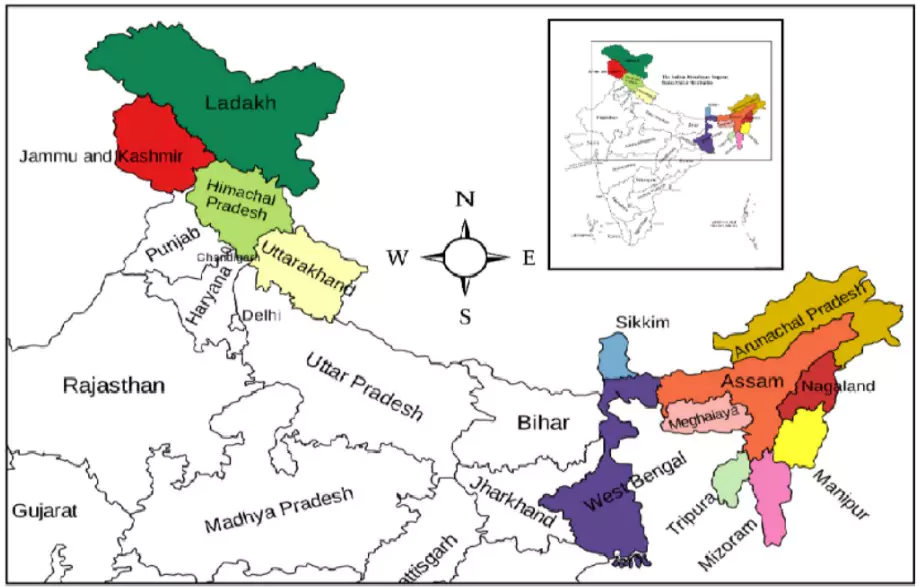| Himalayan Disaster Risk: Causes and Profile |
| Natural Causes |
Human-Induced Causes |
Institutional & Social Gaps |
- Geological Fragility: Young fold mountains, unstable slopes, active fault lines (e.g., Dhaulagiri, Indus–Ganga).
- Geological Survey of India (GSI, 2023): 70% of India’s landslides occur in the Himalayas.
|
- Unplanned Development: Road widening, hydropower tunnelling, unchecked tourism, urbanisation in fragile zones.
|
- Weak Early Warning Systems: Patchy real-time monitoring, delayed alerts (e.g., Uttarakhand 2025 floods).
|
- Seismic Activity: Seismic Zones IV & V are highly prone to earthquakes, triggering landslides and avalanches.
|
- Deforestation and Mining: Reduced slope stability, soil erosion, and blocked drainage channels.
|
- Governance Complexity: Multi-agency overlap (district, state, and central levels) slows coordination and response.
|
- Hydro-Meteorological Hazards: Cloudbursts, flash floods, and Glacial Lake Outburst Floods (GLOFs).
- National Remote Sensing Centre (NRSC, 2022): 329 potentially dangerous glacial lakes mapped.
|
- Encroachment in Riverbeds and Floodplains: Increases vulnerability (e.g., Dharali flood 2025).
|
- Healthcare and Resource Gaps: Remote, marginalised communities lack medical infrastructure and resilience capacity.
|
- Climate Change Multiplier: Warming at twice the global average, glacial retreat, unstable lakes, and erratic monsoon rainfall.
- India Meteorological Department (IMD, 2023): 200% rise in cloudburst incidents in Uttarakhand since 2010 (e.g., Dehradun 2025 record rainfall).
|
- Pilgrimage Pressure: Overcrowding on vulnerable routes (Char Dham, Gangotri).
|
- Low Public Awareness: Citizens often ignore alerts; mock drills remain tokenistic.
|
![]() 19 Sep 2025
19 Sep 2025

 Jammu and Kashmir, Ladakh, Uttarakhand, Himachal Pradesh, Arunachal Pradesh, Manipur, Meghalaya, Mizoram, Nagaland, Sikkim, Tripura, Assam, and West Bengal.
Jammu and Kashmir, Ladakh, Uttarakhand, Himachal Pradesh, Arunachal Pradesh, Manipur, Meghalaya, Mizoram, Nagaland, Sikkim, Tripura, Assam, and West Bengal. 